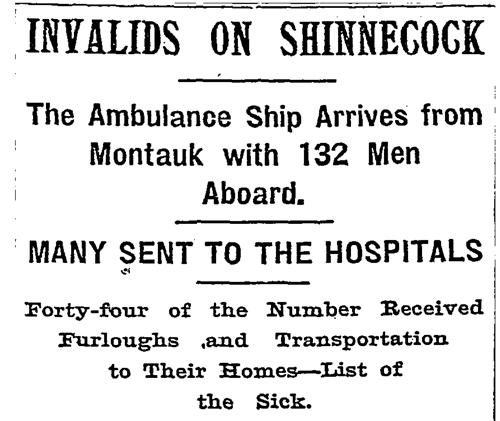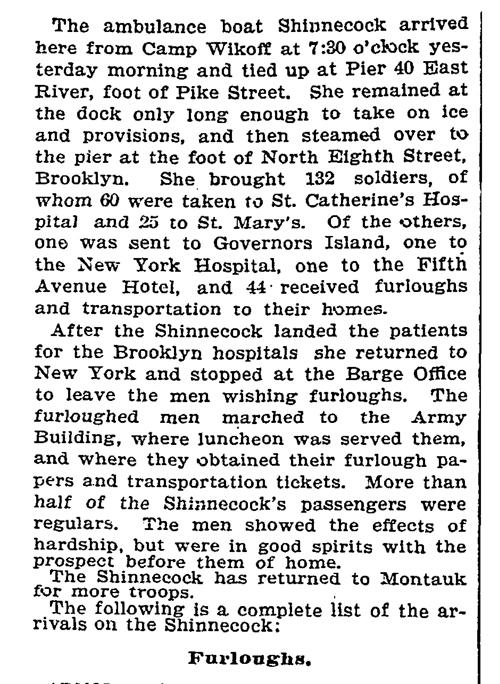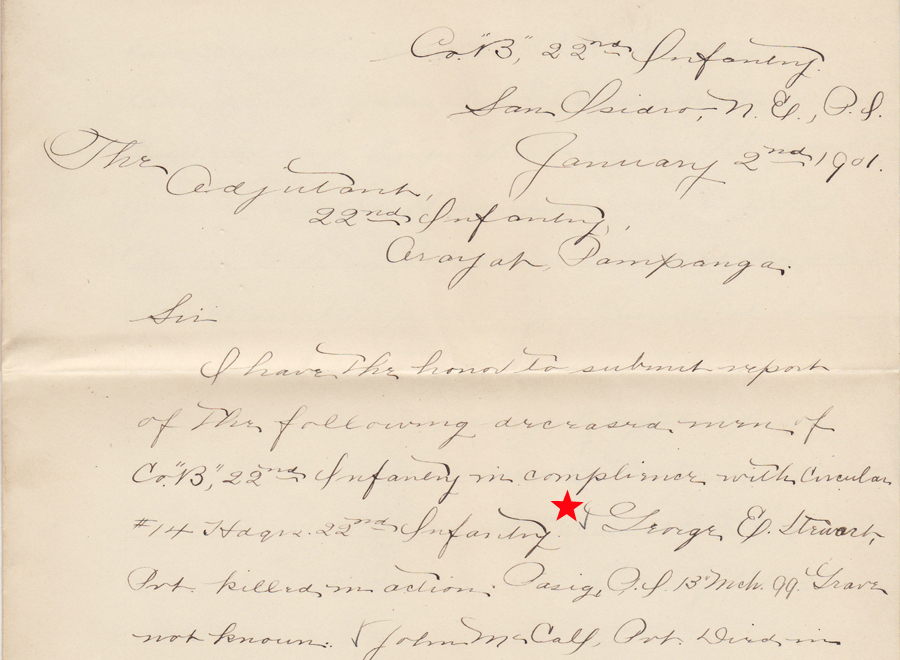
George Edwin Stewart
Company B 22nd Infantry
KIA 03/13/1899
George E. Stewart was born in Ionia County, Michigan on May 1, 1870.
One account indicates he was married in 1894.
Stewart enlisted in Company B
22nd Infantry for a period of three years at Detroit, Michigan
on December 1, 1896. His enlistment record indicated that he had
brown eyes, light brown hair,
a ruddy complexion and stood 5 feet 6 ¾ inches tall. His
occupation was listed as farmer.
Stewart served with Company B
22nd Infantry during the fighting in Cuba in 1898.
At the end of the campaign in Cuba he contracted a severe case of
chronic diarrhea. Upon the return of
the Regiment to the United States at Montauk, New York, Stewart
was transported on the Ambulance Ship
Shinnecock to New York City, where he was given a
furlough to return home to Michigan to recover
from his illness. The clipping below describes the arrival of the
Shinnecock to New York harbor.
Stewart was one of the 44 men
mentioned who received furloughs to travel home to recover
from their wounds and ailments.


![]()
From The New York Times September 7, 1898
Stewart recovered from his
illness, rejoined the 22nd Infantry and sailed with the Regiment
to the Philippines.
Private George E. Stewart was
killed in action during the attack by the 22nd Infantry and the
4th Cavalry
against the insurgent positions on the Guadalupe Ridge, during
the battle for Pasig, east of Manila,
on the island of Luzon, Philippines on March 13, 1899.
Below is the listing of George
Stewart's death and original burial (marked by the red star) in
the report written by
2nd Lieutenant Frederick B. Kerr, Commanding Officer Company B
22nd Infantry, January 2, 1901.


The Belding
Banner, Thursday, March 1, 1900
The remains of George E. Stewart, the soldier boy who gave up his
life in the Philippines, arrived in this city last week,
Thursday. He was a member of Co. B, Twenty-second United States
Infantry, and had served in the Cuban as well as the
Philippine war. He was shot March 13, near Guadelape, and was
buried there until, through the efforts of his brother William,
also a member of the same regiment, it was taken up and encased
in a fine casket and started on its long journey to this city.
It was proposed to hold a military funeral Tuesday, under the
auspices of the G.A.R. and the Cuban soldier boys, but this
movement was thwarted by the authorities acting under the advice
of the board of health insisting upon immediate burial,
and the interment was accordingly made Saturday.
It looks very strange that such haste was necessary. His death
occurred nearly one year ago, the remains were properly
cared for and shipped 10,000 miles, only to be hustled out of the
way like a dead dog. It seems like a shameful proceeding.
Besides the brother William spoken of above, who is now at Hot
Springs, Ark., and is expected to return about May 10th,
he leaves his parents and four sisters. Two of the sisters, Edith
and Alice, are employed in Belding Bros. &
Co.'s silk mill in this city and the parents live at Westville,
his father being an invalid. He was 29 years of age.
From the Find A Grave website created by Bonnie Hoy

Private George E. Stewart's decorations
George E. Stewart was buried on
the battlefield at Guadalupe in the Philippines.
His remains were returned to San Francisco, California on board
the transport Ohio
on February 2, 1900. His body was shipped to Edith Stewart in
Belding, Michigan
on February 17, 1900.
Burial:
River Ridge Cemetery
Belding
Ionia County
Michigan, USA
Plot: Lot 23 Sec: 2

Photo by Melody from the Find A Grave website
Home | Photos | Battles & History | Current |
Rosters & Reports | Medal of Honor | Killed
in Action |
Personnel Locator | Commanders | Station
List | Campaigns |
Honors | Insignia & Memorabilia | 4-42
Artillery | Taps |
What's New | Editorial | Links |